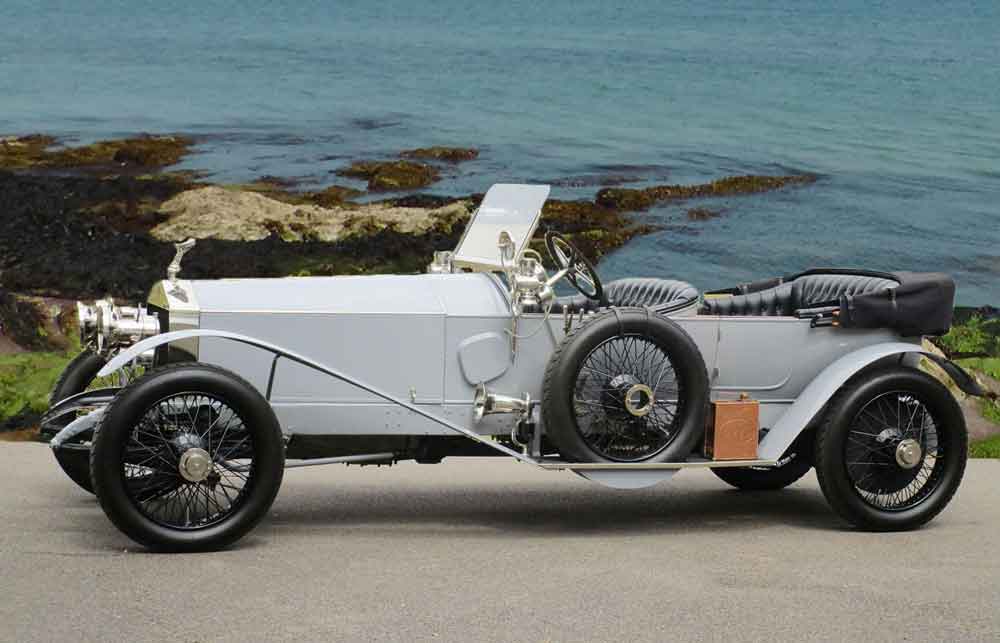Rolls Royce Silver ghost


Back in 1906 a car known as the Rolls-Royce 40/50HP was created but it very quickly became known as the Silver Ghost.
How this came about was probably accidental. To get some publicity a demonstrator car was built and this was painted silver using aluminium paint and given silverplated fittings. This car, and this car alone, was named the 'Silver Ghost' (this was to stress how quiet the car was) and there was in fact a name plaque to this effect on the bulkhead. The car was entered in the 1907 Scottish Reliability Trials and then straight after that it was given a thorough test over 15,000 miles on UK roads.
Maximum publicity was arranged by Rolls-Royce; this was a very brave thing to do bearing in mind the fact that cars of the time were very unreliable, and roads were in an even more shocking state than they are today! Nevertheless the exercise was successful; the motoring press was extremely impressed and the name 'Silver Ghost' was used by them to describe the model, not the individual car. Although Rolls-Royce themselves never adopted the name until 1925 it stayed with the car in the eyes of the buying public from then on. It would be interesting to know if as many would have been sold had it still being called the 40/50HP!
The straight six cylinder engine with two spark plugs per cylinder had a total capacity of more than seven litres; a huge displacement by modern standards but power output was still not all that impressive at just 48 brake horsepower. This propelled the car at up to 78 mph. It was usually sold as a rolling chassis only with buyers free to select their own coachbuilders to finish it off to their own specifications.
Although the technology was cutting-edge for the beginning of the 20th century, by today's standards it was positively primitive! A hand operated brake affected the rear wheels only, with a foot pedal which, it was hoped, could slow down the rotation of the prop shaft; and this was one big heavy car; and electric lights weren't even optional until just before war was declared in 1914, when production for the domestic market was stopped so that the company could concentrate on war work.
It wasn't really, however, the technical innovations or design of this car (which was very expensive and definitely not one for the masses to buy) but the sheer unbreakable reliability of it that impressed buyers, and production, after the war ended, continued right up until 1926 by which time 7874 of them had been built and sold. They can now change hands for tens of millions of pounds each.
Need to insure a car for a few days, a week, a month? You can apply for insurance even if you don't own the car, plus UK, EU and some Commonwealth driving licences are accepted!